The animal kingdom is always developing, whether it’s caused by nature or domestication. While some animals, although evolved, might seem similar to their ancestors, others have changed drastically to the extent that they might not even be recognizable as relatives.
Here is a list of animals that have changed so much over time and are barely recognisable.
- Domestic Pigs.
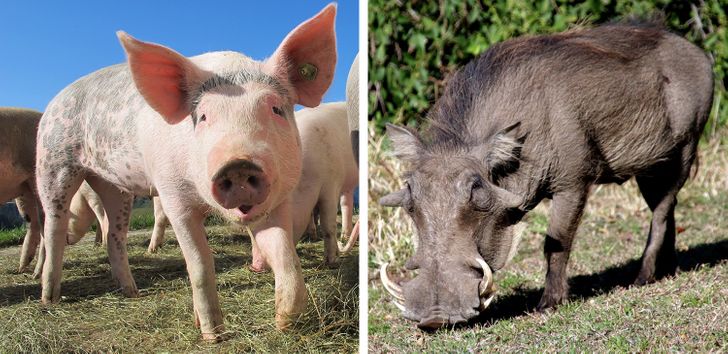 Most domestic pig breeds descended from wild boars. Archaeological evidence indicates that pigs were domesticated from wild boars as early as 13,000–12,700 BC. They were used mostly for food, but early civilizations also used the pigs’ hides for shields, their bristles for brushes and their bones for tools and weapons. During the evolution resulting from domestication, they lost their coarse fur and tusks.
Most domestic pig breeds descended from wild boars. Archaeological evidence indicates that pigs were domesticated from wild boars as early as 13,000–12,700 BC. They were used mostly for food, but early civilizations also used the pigs’ hides for shields, their bristles for brushes and their bones for tools and weapons. During the evolution resulting from domestication, they lost their coarse fur and tusks. - COWS.
 Aurochs, an extinct large wild cattle species that inhabited Europe, Asia, and North Africa, is considered by scientists to be the ancestor of domestic cattle. Experts have also suggested it as an ancestor to the modern European bison. The cattle that we mostly see today are dairy cattle (those bred specifically for producing large quantities of milk) or beef cattle (bred for meat production).
Aurochs, an extinct large wild cattle species that inhabited Europe, Asia, and North Africa, is considered by scientists to be the ancestor of domestic cattle. Experts have also suggested it as an ancestor to the modern European bison. The cattle that we mostly see today are dairy cattle (those bred specifically for producing large quantities of milk) or beef cattle (bred for meat production). - ELEPHANTS.
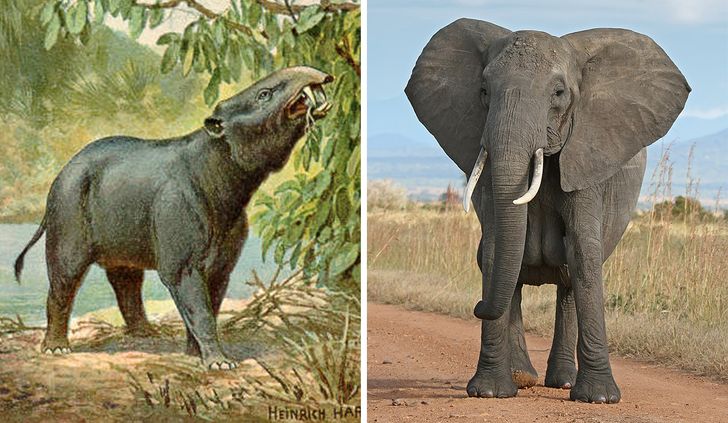 Moeritherium, a swamp-dwelling animal resembling a hippopotamus, is thought by scientists to be an ancient elephant relative. They were approximately the size of a tapir—29 to 42 inches (74 to 107 centimetres) tall at the shoulder.
Moeritherium, a swamp-dwelling animal resembling a hippopotamus, is thought by scientists to be an ancient elephant relative. They were approximately the size of a tapir—29 to 42 inches (74 to 107 centimetres) tall at the shoulder. - RABBITS.
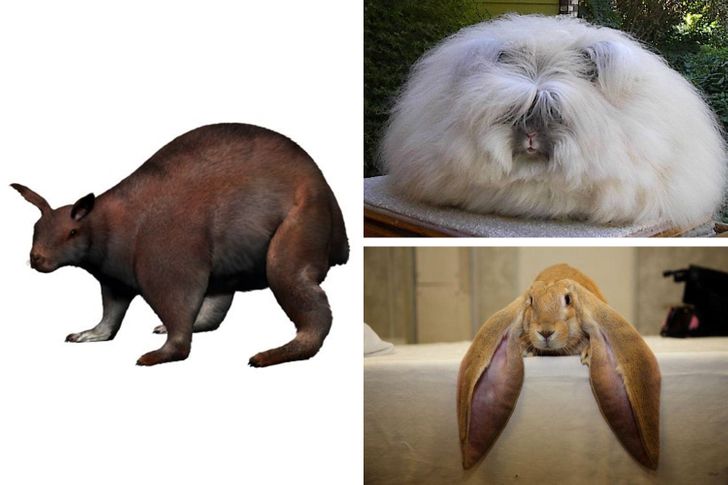 The ancestors of rabbits looked nothing like them. Instead, Nuralagus, which is now universally regarded as being the ancestors of rabbits, were about 6 times heavier than the modern rabbit. They were also not as agile and could not jump. From the ancient Nuralagus, present-day rabbits have come a long way. And a rise in animal fancy has seen them evolve due to cross-breeding— into unique and varied shapes and sizes.
The ancestors of rabbits looked nothing like them. Instead, Nuralagus, which is now universally regarded as being the ancestors of rabbits, were about 6 times heavier than the modern rabbit. They were also not as agile and could not jump. From the ancient Nuralagus, present-day rabbits have come a long way. And a rise in animal fancy has seen them evolve due to cross-breeding— into unique and varied shapes and sizes. - GIRAFFES.
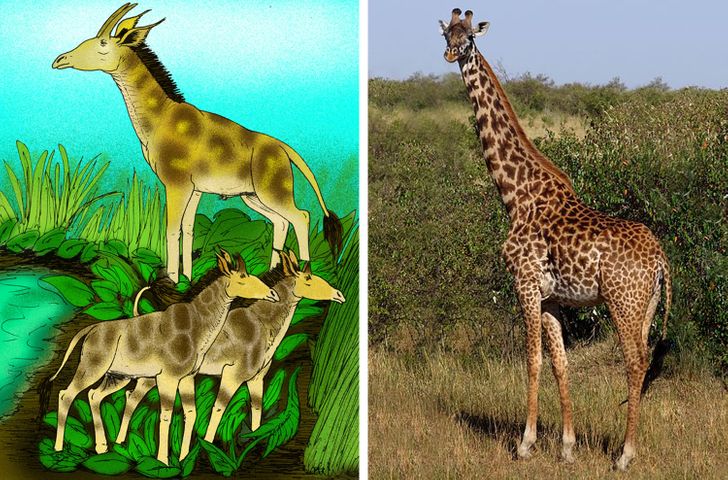 The closest known relative of giraffes is the now extinct Samotherium. The anatomy of a Samotherium shows a transition to a giraffe-like neck. Samotherium, which roamed around in the woodlands of Eurasia about 7 million years ago, had a neck that was about one meter long—about half the length of today’s giraffes. It is widely believed that the scarcity of food near the ground led to the elongation of the neck to reach higher up vegetation.
The closest known relative of giraffes is the now extinct Samotherium. The anatomy of a Samotherium shows a transition to a giraffe-like neck. Samotherium, which roamed around in the woodlands of Eurasia about 7 million years ago, had a neck that was about one meter long—about half the length of today’s giraffes. It is widely believed that the scarcity of food near the ground led to the elongation of the neck to reach higher up vegetation. - SHARKS.
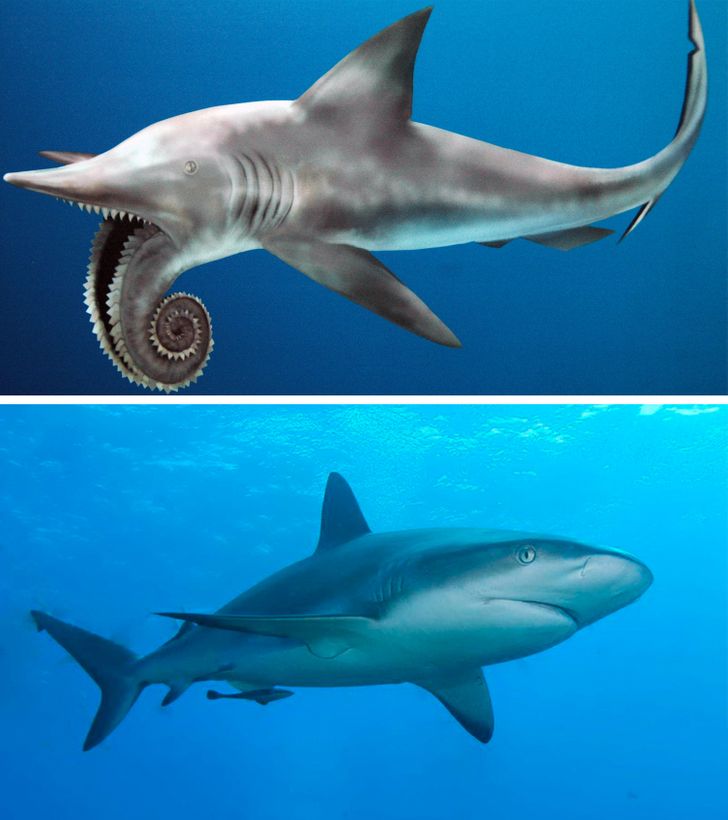 Sharks are mysterious creature, and not much is known about them or how they evolved. However, in many scientific circles, the Helicoprion is considered to be their ancestor. The tooth whorl, however, is a contentious issue among scientists. While some believe it to be present in the lower jaw, others think it was in the upper jaw. Whether the tooth whorl curled inward or outward is also a matter of debate.
Sharks are mysterious creature, and not much is known about them or how they evolved. However, in many scientific circles, the Helicoprion is considered to be their ancestor. The tooth whorl, however, is a contentious issue among scientists. While some believe it to be present in the lower jaw, others think it was in the upper jaw. Whether the tooth whorl curled inward or outward is also a matter of debate. - DOMESTIC SHEEP.
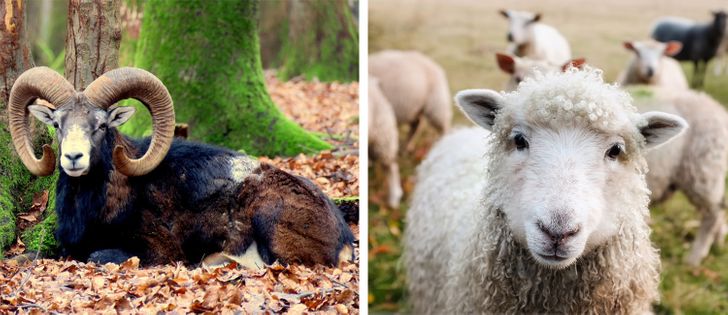 The mouflon is widely considered to be the ancestor of the domestic sheep. As a result of this evolution, present-day sheep are a lot tamer than their ancestors. While mouflons were usually brown, the colours of domestic sheep range from pure white to dark chocolate brown. The white colour of sheep is the result of selective breeding since the white colour is easily dyeable.
The mouflon is widely considered to be the ancestor of the domestic sheep. As a result of this evolution, present-day sheep are a lot tamer than their ancestors. While mouflons were usually brown, the colours of domestic sheep range from pure white to dark chocolate brown. The white colour of sheep is the result of selective breeding since the white colour is easily dyeable.
Surprised by the changes? Do you think with time, humans will also evolve?
Also read:




